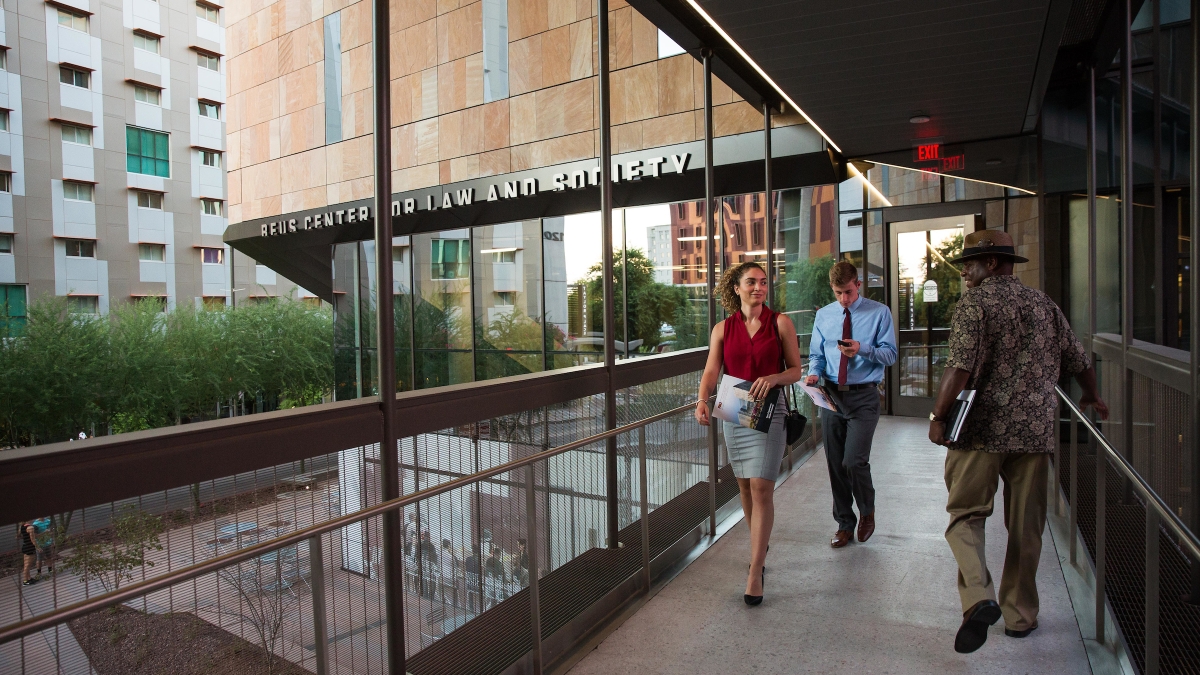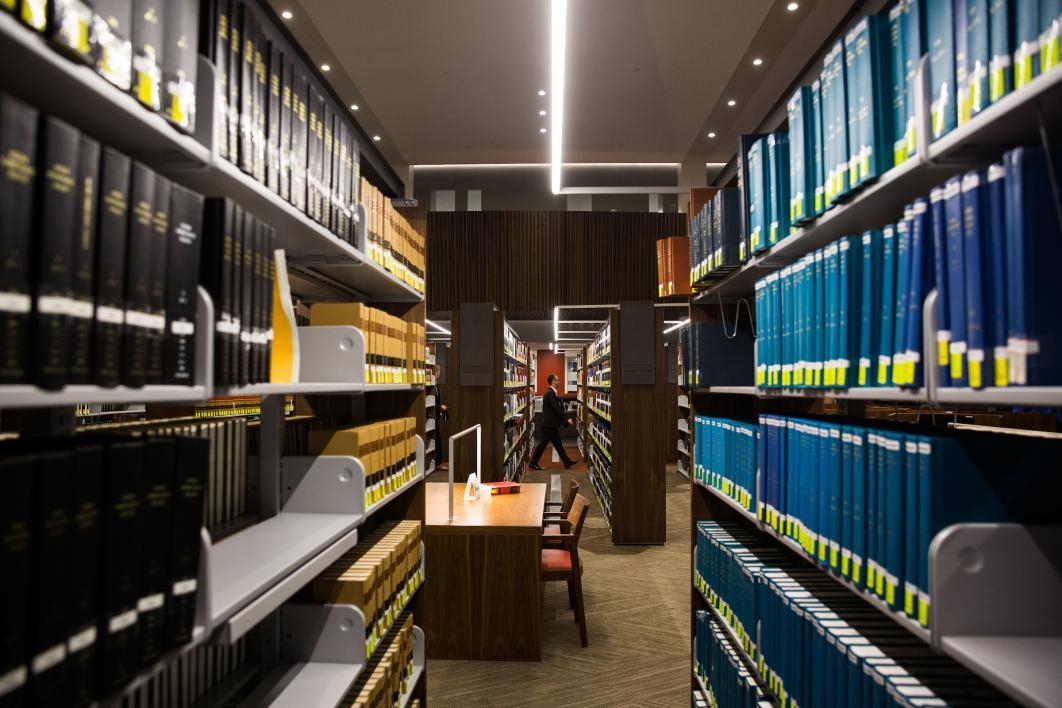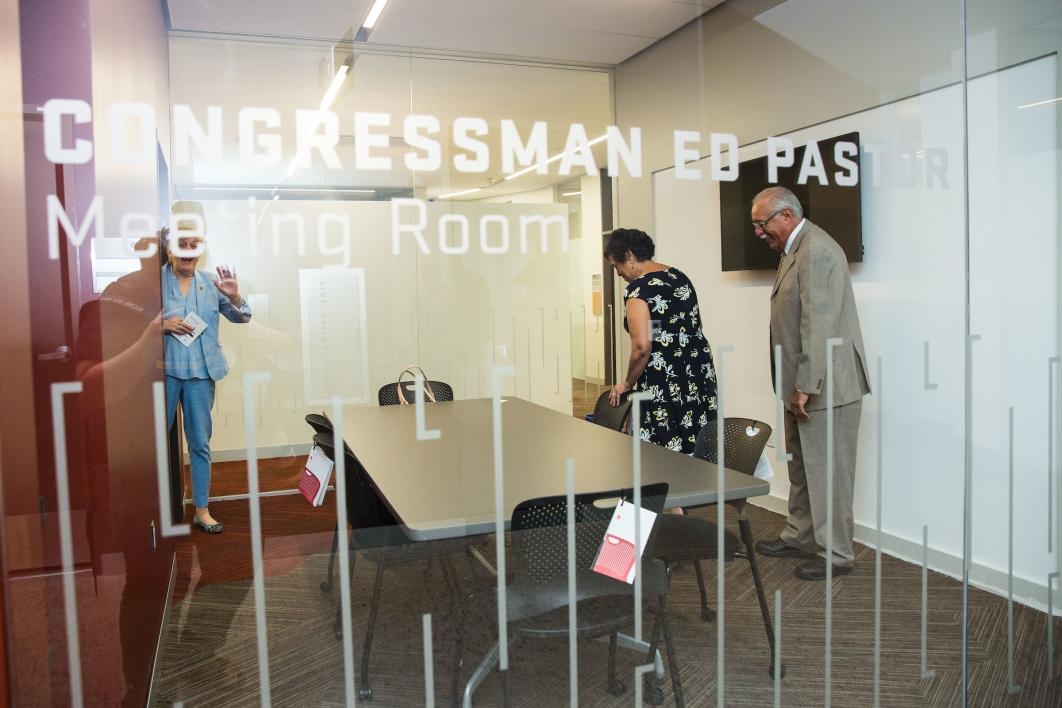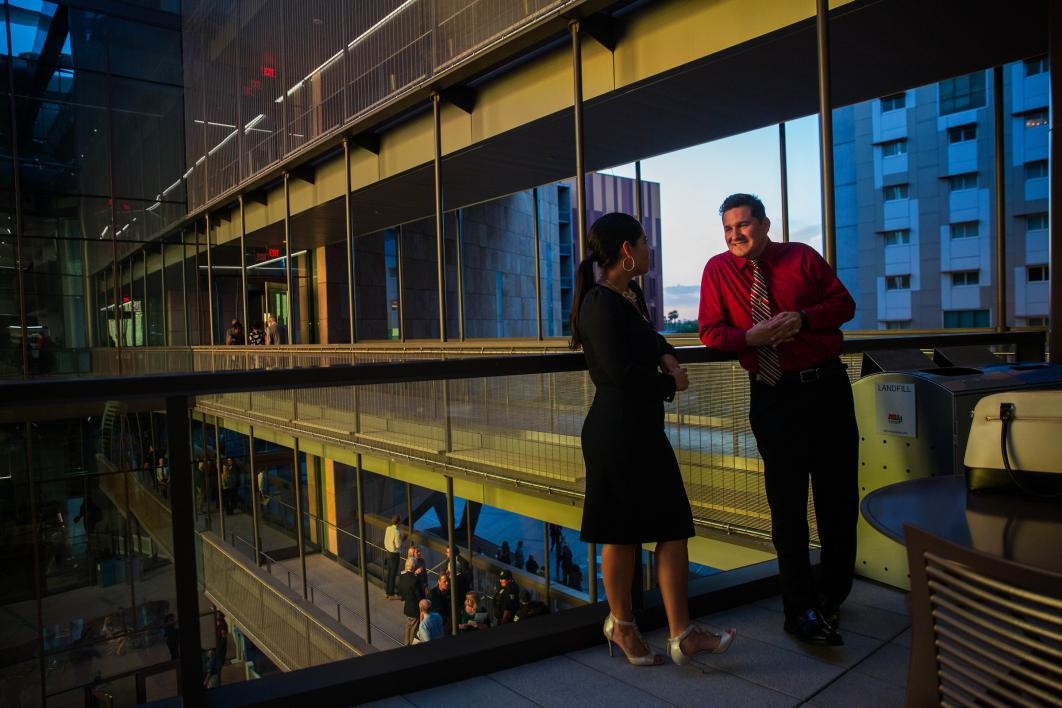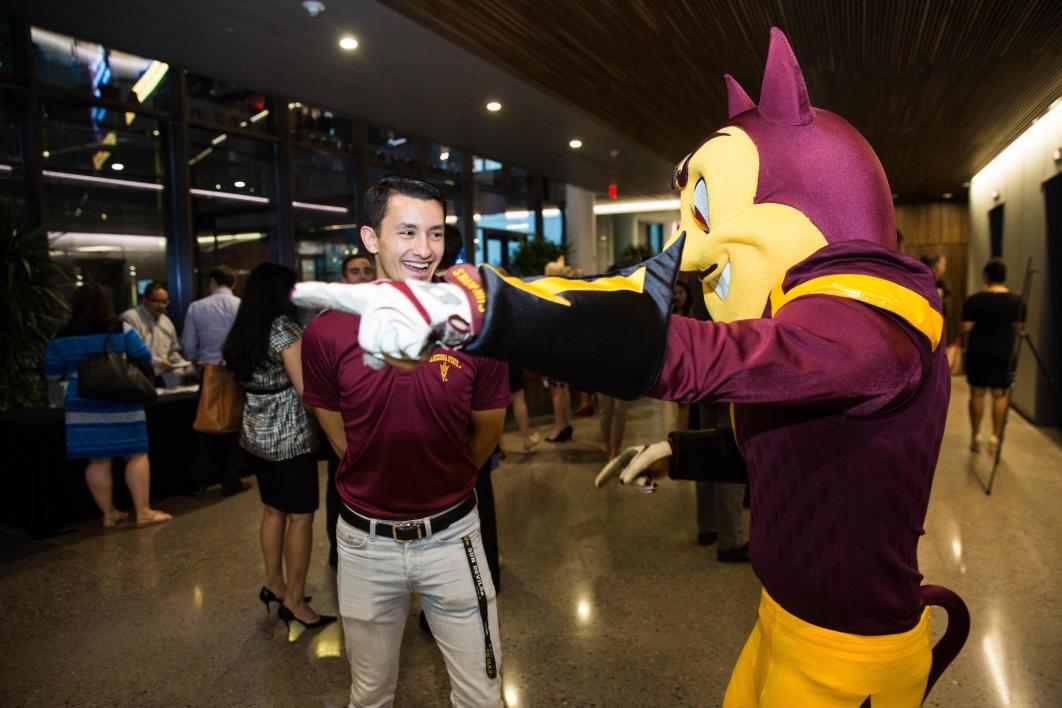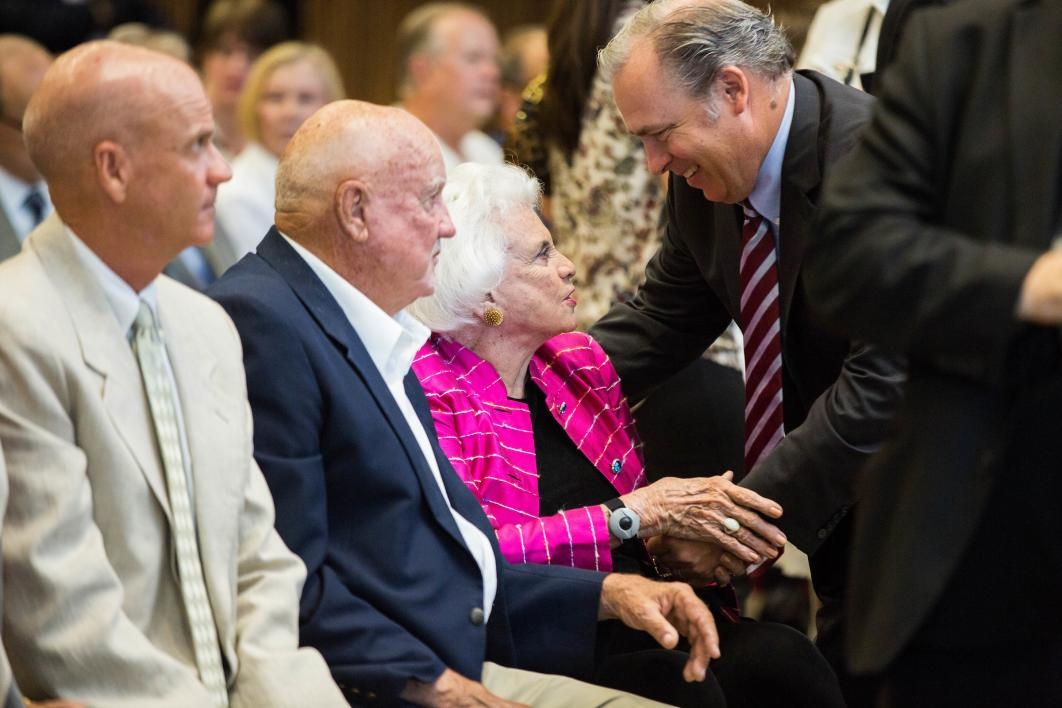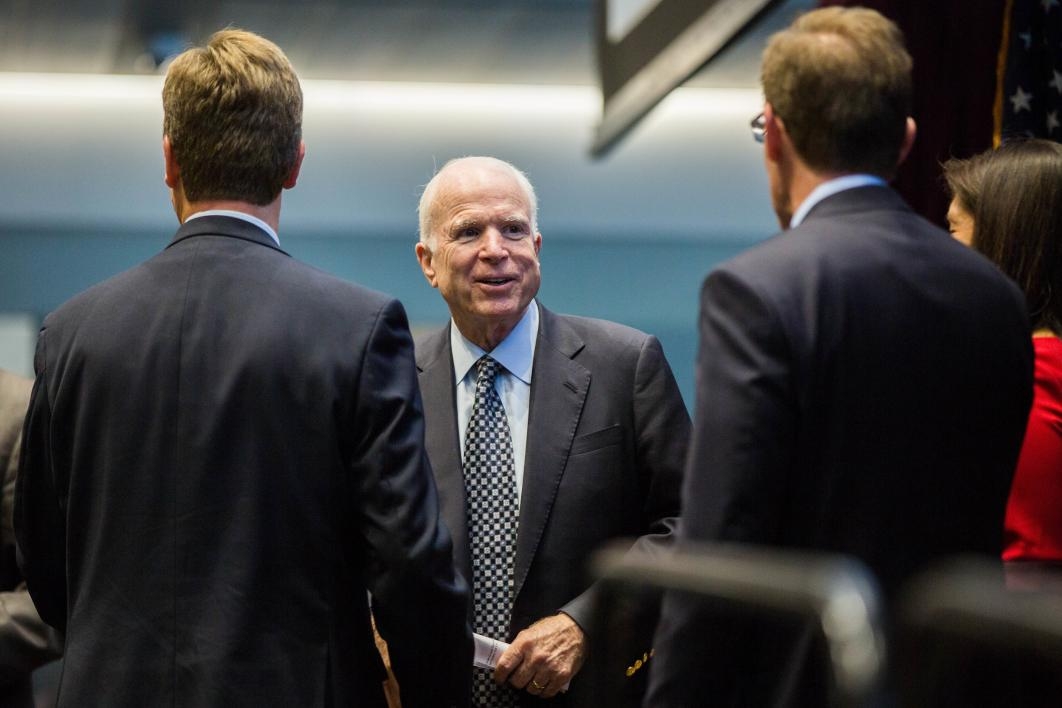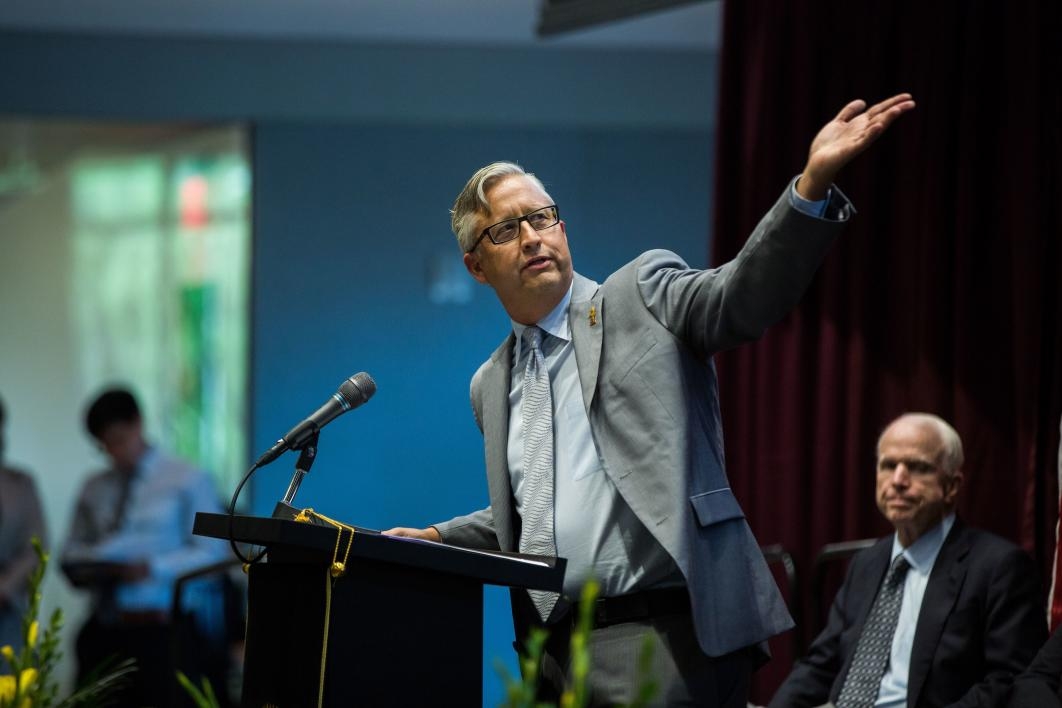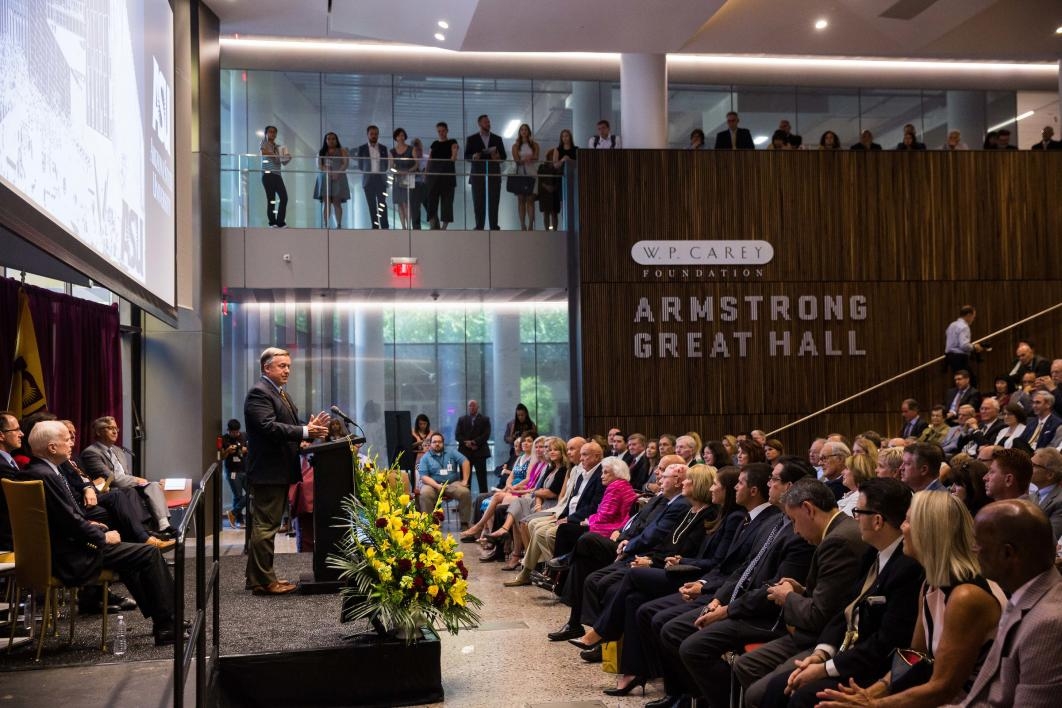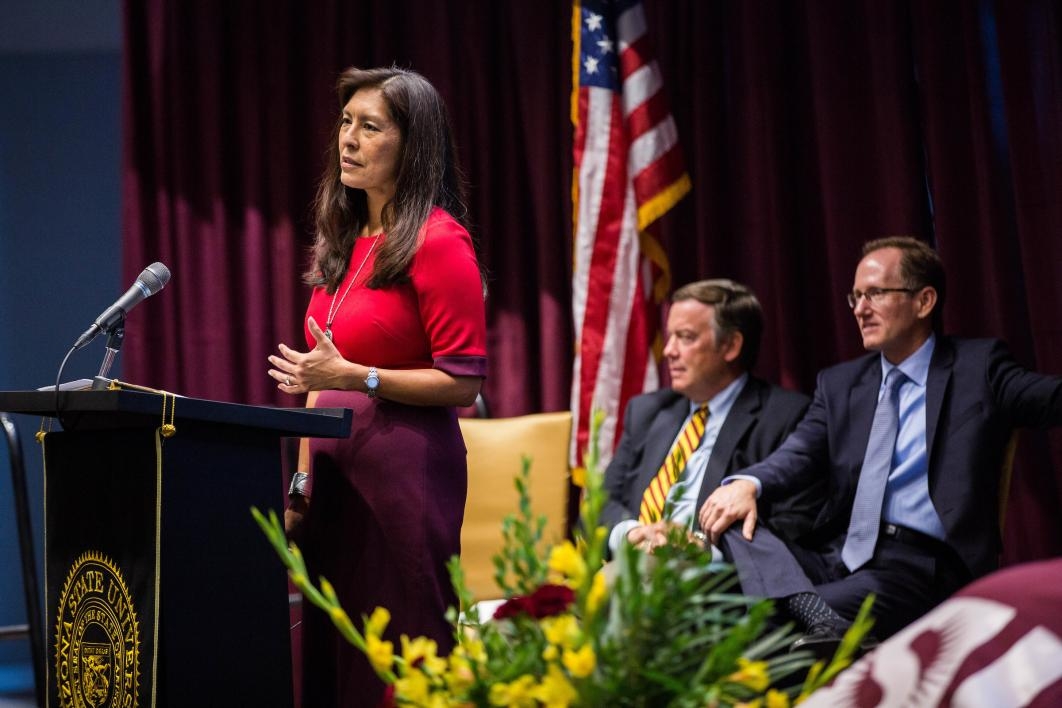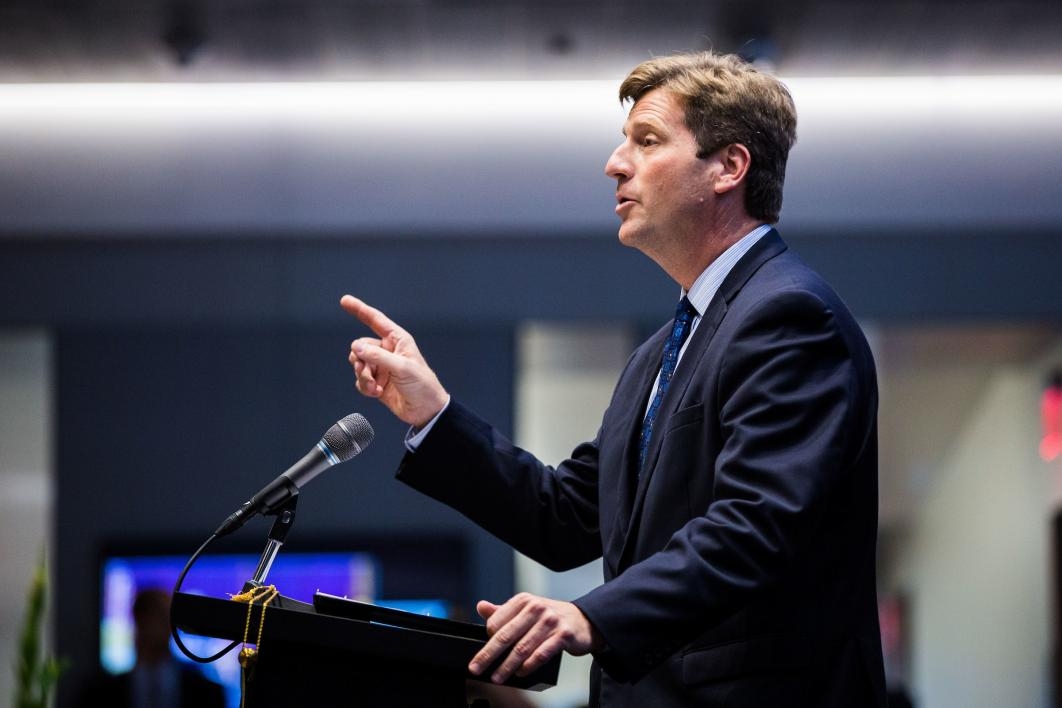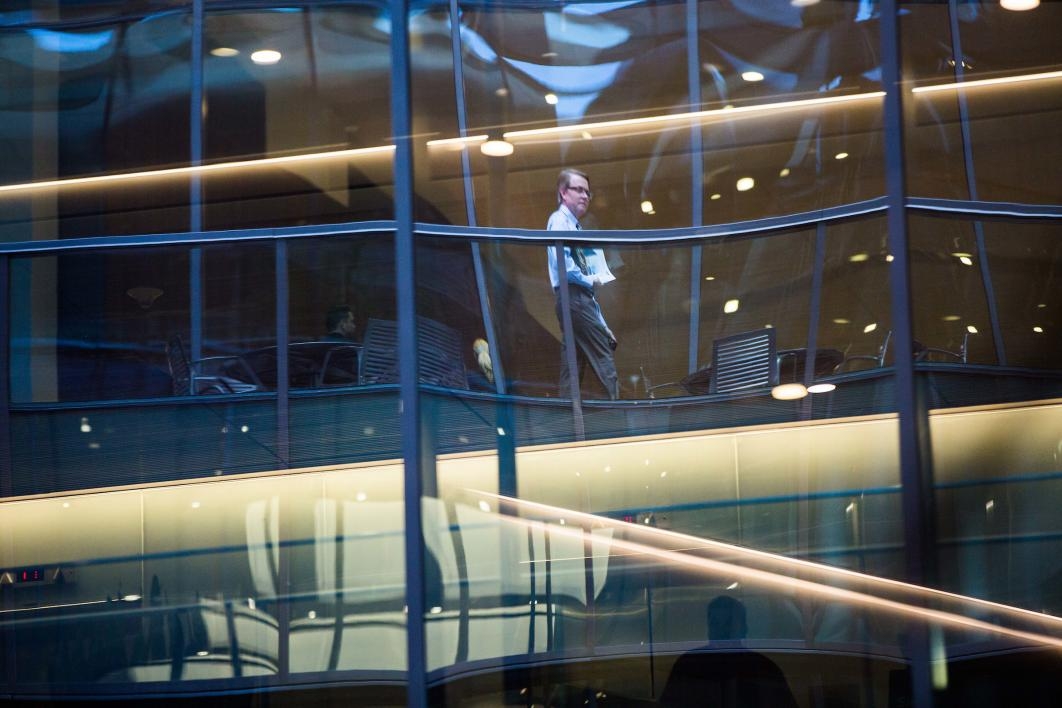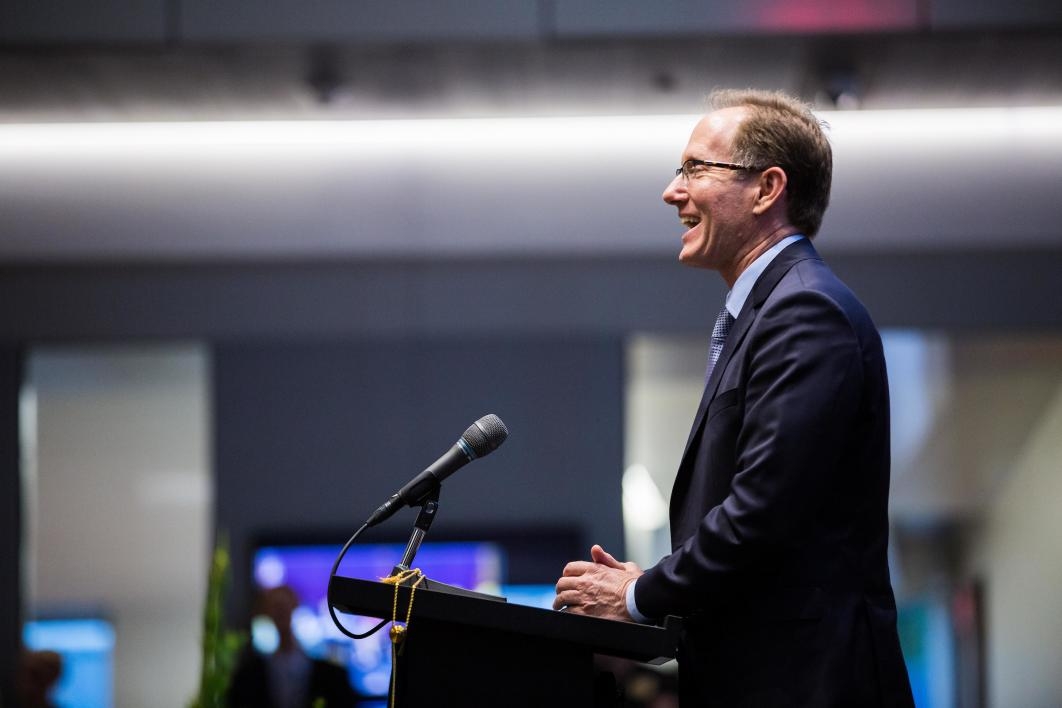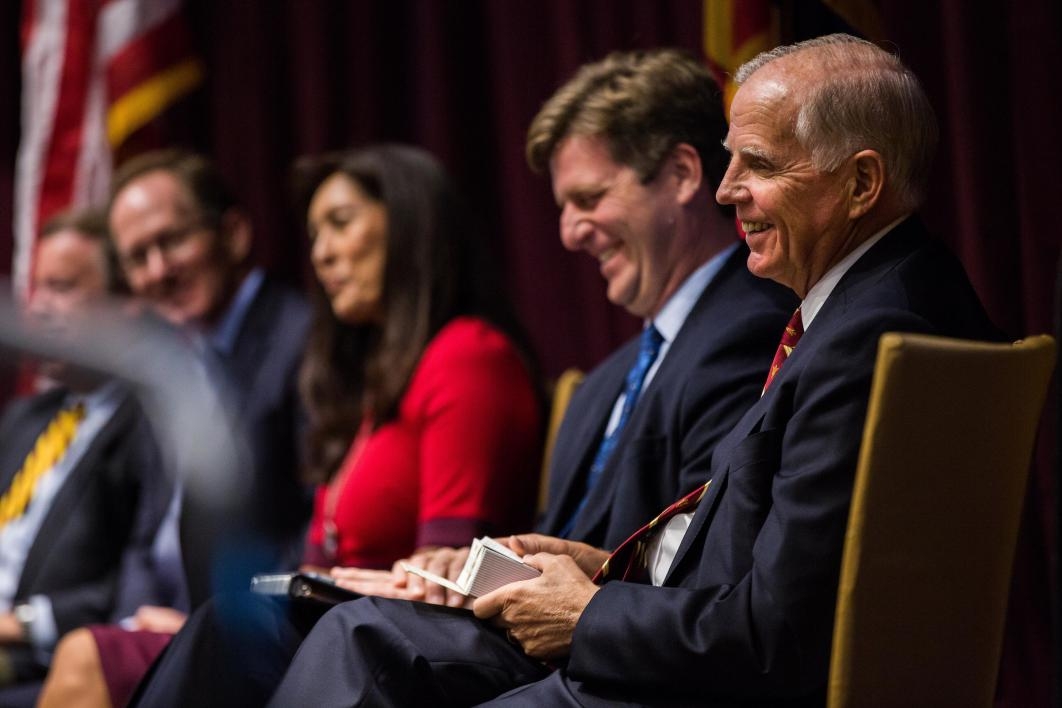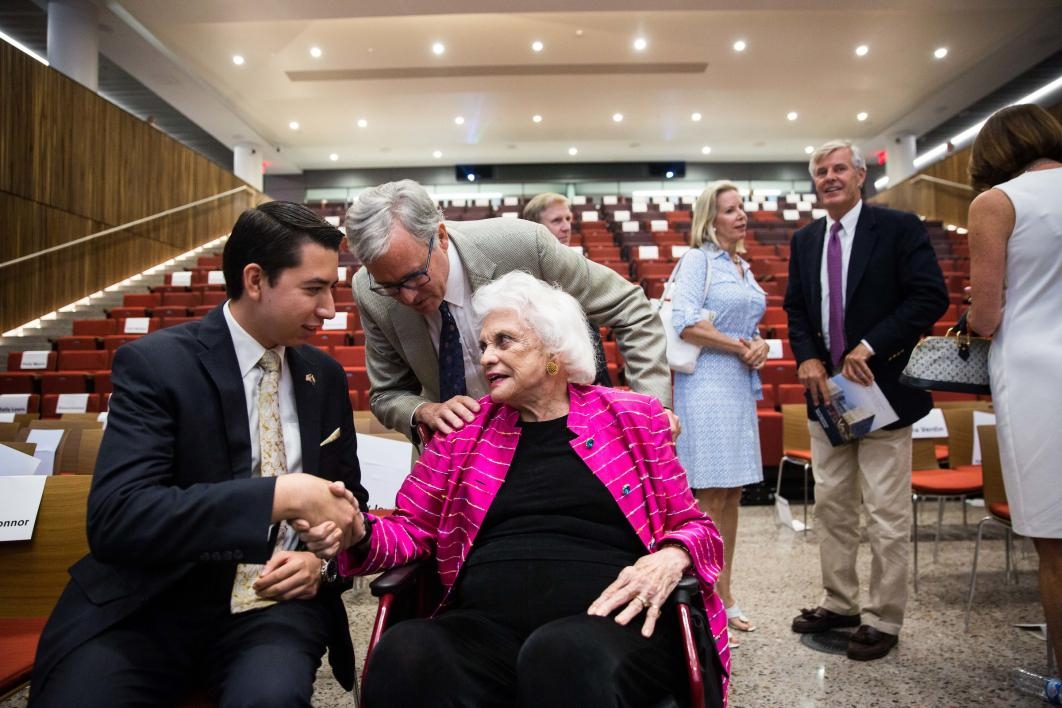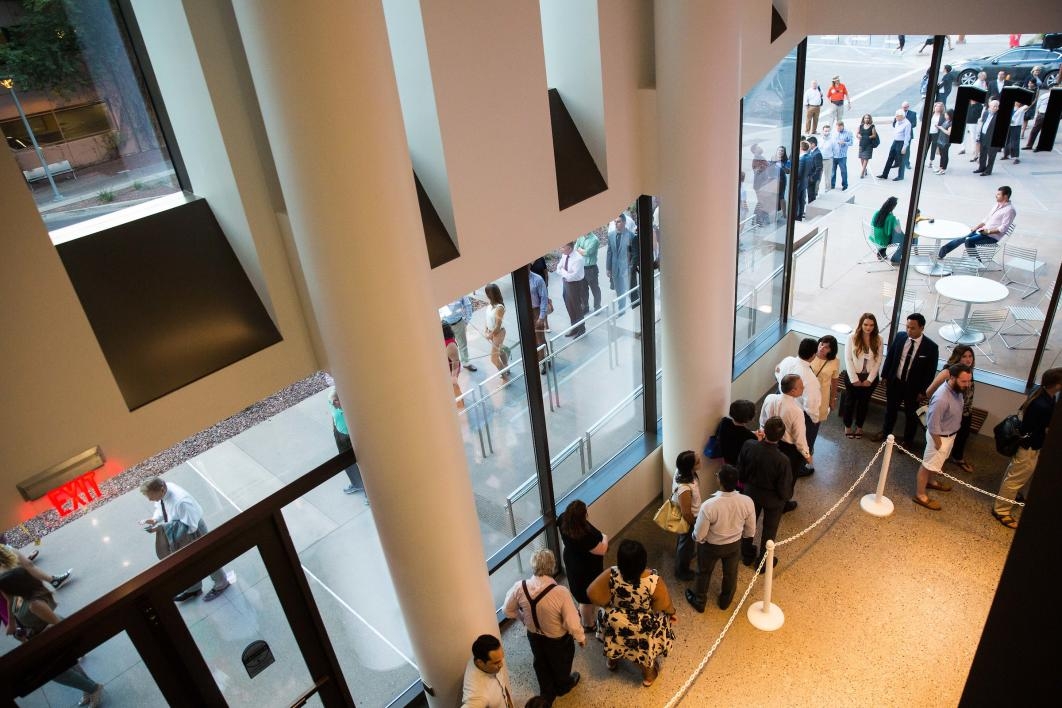Editor's note: This story is being highlighted in ASU Now's year in review. To read more top stories from 2016, click here.
Leaders from courtrooms and capitols joined Arizona State University President Michael M. Crow on Monday evening to christen the Beus Center for Law and Society, a nearly $130 million building in downtown Phoenix that Crow said would stand as a monument to inclusion and accessibility.
The grand opening highlighted how the building that Crow called a “world-class facility in a world-class location” would serve as more than home to ASU's Sandra Day O’Connor College of Law, whose namesake, a retired U.S. Supreme Court Justice, joined the ceremony. Crow and other speakers emphasized the center’s aim of connecting the community, as much as students, to the law and justice. The center will house the nation’s first teaching law firm, a law library open to the public and a legal triage service to help the public find legal support.
ASU leaders said the building’s expansive atrium, courtyard and public spaces are intended to encourage that openness.
A crowd of around 400, including U.S. Sen. John McCain and Phoenix Mayor Greg Stanton, celebrated the latest addition to ASU’s 10-year-old Downtown Phoenix campus.
The center was named for attorney Leo Beus and his wife, Annette, who contributed $10 million to help build it — the largest donation in the law school’s history. The 2014 gift brought the Beus’ ASU Law donation total to $15 million.
“This university is transforming education across the country,” Leo Beus said. “We were such a blessed community to have this here.”
Classes begin Wednesday at the six-story, 280,000-square-foot center in the legal, political and economic heart of Arizona. The dedication caps a massive relocation that began a decade ago. ASU Law’s new home includes a state-of-the-art courtroom.
Aside from the law school, the building will be home to organizations including: the Arizona Legal Center, The McCain Institute for International Leadership, Arizona Voice for Crime Victims, the Arizona Justice Project, the Lincoln Center for Applied Ethics and the Sandra Day O’Connor Institute.
The Ross-Blakley Law Library also transitioned to Phoenix in the move. It had been located in a separate building near the law school in Tempe. The library will occupy multiple floors and will include 100,000 tangible volumes of legal research and 125,000 electronic titles.
The Beus Center for Law and Society also will include space for two think tanks.
Stanton said the city’s economic success was closely tied to the creation and growth of ASU’s Downtown Phoenix campus over the past decade and called the city’s land and financial contributions “one of the best investments the city, the people and taxpayers have ever made.”
The Downtown Phoenix campus boasts 13,000 students, about 900 of whom attend ASU Law.
Douglas Sylvester, the school’s dean, said the college has already seen 30 percent more applications since last year. He called the new facility “unquestionably the most optimistic and ambitious school in the country and in the world.”
More Law, journalism and politics
Can elections results be counted quickly yet reliably?
Election results that are released as quickly as the public demands but are reliable enough to earn wide acceptance may not always be possible.At least that's what a bipartisan panel of elections…
Spring break trip to Hawaiʻi provides insight into Indigenous law
A group of Arizona State University law students spent a week in Hawaiʻi for spring break. And while they did take in some of the sites, sounds and tastes of the tropical destination, the trip…

LA journalists and officials gather to connect and salute fire coverage
Recognition of Los Angeles-area media coverage of the region’s January wildfires was the primary message as hundreds gathered at ASU California Center Broadway for an annual convening of journalists…


